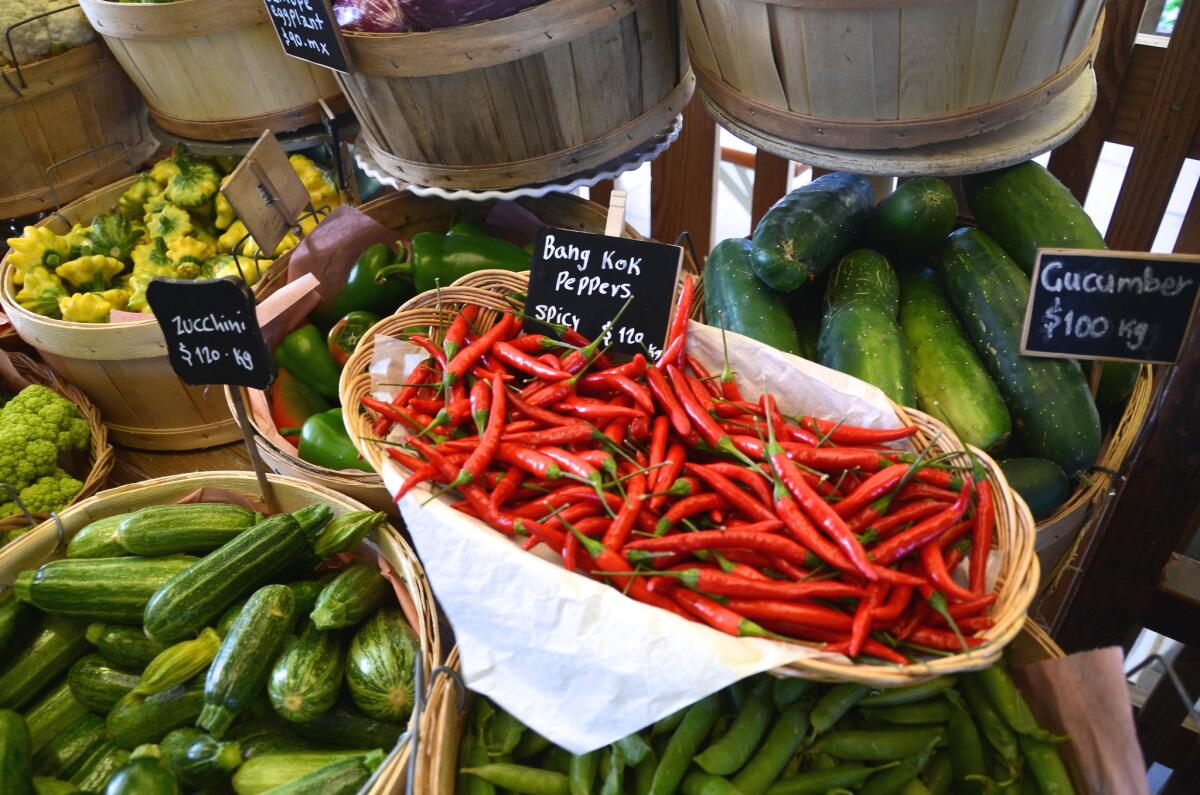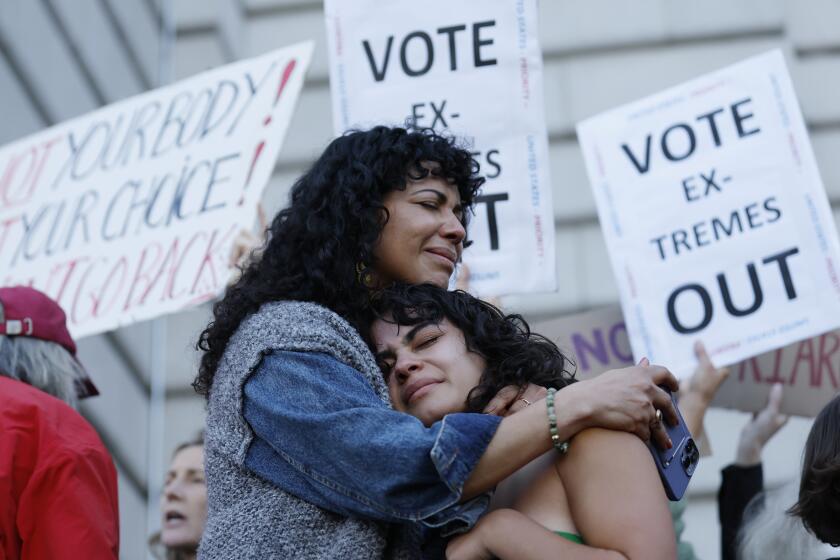Opinion: When deciding what foods to eat for lunch, consider climate change

Have you ever sat down in a restaurant and felt instantly drawn to a particular dish on the menu? The reason might be something as simple as that you love the dishâs main ingredient, but itâs often more than that. It could be the itemâs placement on the menu, its name, even whom you saw eating it as you crossed the restaurant.
Understanding all the factors that attract us to certain foods is a growing area of research, with enormous potential for addressing something unexpected: climate change.
Agriculture â and the changes in land-use it necessitates â accounts for about 25% of all greenhouse gas emissions warming the planet. But not all foods have equal impacts. Globally, the production of animal-based foods accounts for about two-thirds of agricultural emissions and more than three-quarters of agricultural land use, while plant-based foods generally have lower environmental impacts.
The food choices we make have helped drive the climate crisis, and they can help address it. But first we have to understand how we choose what to eat.
Scientists are finding that the way food is presented and labeled can make a big difference. In one study, for example, party guests were given a glass of a cold mango-yogurt drink called a mango lassi. Half the guests were told the lassi was healthy. The rest were told it was unhealthy. Those who had the âhealthyâ drink rated it as 55% less enjoyable than those who drank the âunhealthyâ version, though the drinks were exactly the same.
Whether food is displayed on a porcelain or wooden platter makes a difference in what diners pick. So does the day of the week. Meat-Free Mondays, for example, havenât caught on simply because of a catchy name: Research shows that people often seek out healthier food options following indulgent weekends â and choosing plant-based foods fits the bill.
Peopleâs choices around what to eat are influenced by so much more than just the food on offer. Our decisions tend to be driven by habit and familiarity and what our peers are eating. Choices are made rapidly and are influenced by lots of seemingly small factors outside our conscious awareness. But we can make those choices more conscious by arming ourselves with information.
Per gram of protein, beef requires 20 times more land and generates 20 times more greenhouse gas emissions than a plant-based protein such as beans. Increasing the share of plant-based foods in our diets is therefore a critical step in reducing agricultureâs pressure on forests, water and climate. That doesnât necessarily mean giving up meat, though. We can cut diet-related environmental impacts by nearly half simply by eating less animal-based food and more plants. At the World Resources Institute, we recommend that Americans limit their red-meat consumption to the equivalent of 1.5 burgers per week.
By examining how food decisions are made, scientists have learned that simple nudges can change peopleâs behavior in big ways. Restaurants, hospitals, hotels, universities, and even cities have begun tapping the latest behavioral science to help consumers cut their carbon footprint by choosing more sustainable foods.
Through the Cool Food Pledge, an initiative that aims to slash food-related GHG emissions by 25% by 2030, signatories like UCSF Health, the University of Maryland, Hilton Hotels and Europeâs Max Burgers are changing menu layouts, using appetizing language to encourage healthy choices, offering tastings and embracing other science-backed innovations to make the sustainable-food option attractive to diners. Together, the participants in this new effort serve more than 800 million meals each year.
Some of these behavioral-science-backed strategies include offering consumers appealing alternatives to beef. In April, Burger King began a trial of the plant-based Impossible Burger at 59 outlets in and around St. Louis. The Impossible Burger is an imitation-meat burger specially designed to look, smell and taste like beef. After just one month, Burger King reported that restaurants in St. Louis pulled in 19% higher foot traffic than the companyâs national average, and the company has now rolled out the Impossible Whopper to its restaurants across the United States.
Another strategy has been giving more real estate to plant-based dishes. At Seattle Pacific University, campus food service provider Sodexo doubled the size of its plant-rich food station, spreading existing options into neighboring display areas and adding new menu items. The team also changed how it marketed the food, rebranding the station as Avant Garden to appeal to meat eaters as well as core vegetarian and vegan diners. In the semester following these changes, sales from Avant Garden increased by 11%.
Every day weâre learning more about how people make decisions on food, and how to put that knowledge to work protecting the planetâs natural resources and fighting climate change. These kinds of nudges may sound simple enough, but they are powerful drivers for climate action. Your lunch plate, and the choices you make about what goes on it, may just help save the planet.
Daniel Vennard is director of the Better Buying Lab at the World Resources Institute. He also leads the instituteâs Cool Food Pledge efforts.
More to Read
A cure for the common opinion
Get thought-provoking perspectives with our weekly newsletter.
You may occasionally receive promotional content from the Los Angeles Times.










